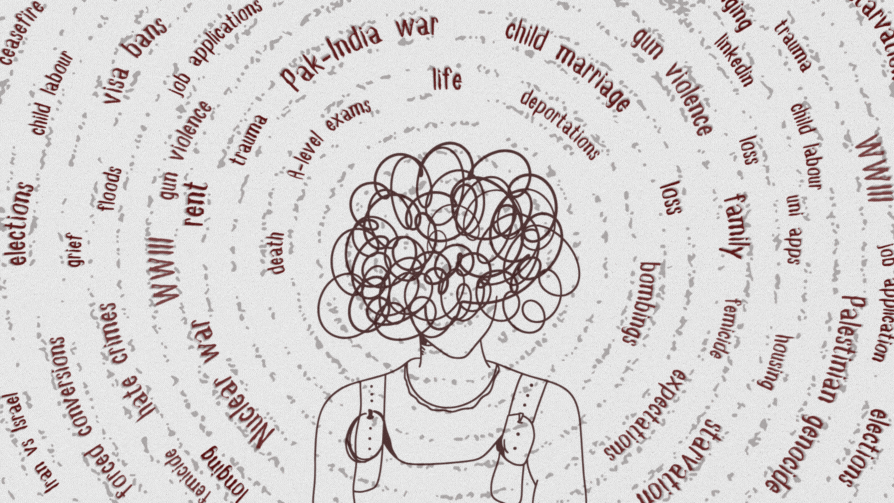This man's currency collection documents Pakistan's history in a totally unique way
A resident of Dhabian, Malik Tahir Suleman has been collecting currency notes and coins issued since 1947 and celebrated Independence Day by exhibiting his collection at his home and inviting the public for a viewing.
School going children, art enthusiasts, tourists, amateur and professional philatelists or stamp collectors and numismatists, who are coin and banknote collectors, took him up on his offer and went to see one of the largest private collections of coins and notes, including those issued by King George VI.
Also included in the collection are Rs500 notes issued in the year 1955 and discontinued in 1965 as it was believed that such a high value note was becoming a tool for corruption and money laundering as well as special currency notes issued in 1997 in connection with the 50th Independence Day celebrations.
Mr Suleman said he started collecting coins and notes when he was 10.
“Collecting these keeps me informed about history, inflation, the government and political regimes, economies and religion. You learn about how civilisations began, expanded into empires and declined,” he said.
Coins are like “history in your hands”, he said. “For example, arrows on a coin mean they were issued in war times while olive branches meant peace.” He added that every coin stamp has a fascinating story behind it and that one can learn about wildlife, sport, culture, traditions and the famous people of the time they were issued in.
“It feels good to have a banknote in my hand as proof of the country’s history and they provide as much information as reading about it in history books or movies,” he said.
From the 15th century onwards, he said, coin collecting became a hobby of kings and nobles who would employ agents to search for rare and beautiful coins across Europe and Asia.
Numismatic research was encouraged by aristocratic families which led to trade in coins, fuelled by excavations of ancient sites.
Talking about the history of currency in Pakistan, he said that when the country was first created, Pakistan would use Indian coins and currency which were stamped with ‘Government of Pakistan’. These notes have the image of King George VI printed on the front and were printed by the Reserve Bank of India.
After its creation, he said, Pakistan also did not have a central bank to print paper currency or coins.
Therefore, the governor general of undivided India issued the Pakistan (Monetary System and Reserve bank) Order 1947 on August 13, 1947, a day before partition. Under the order, the Reserve Bank of India was to act as the common currency authority for India and Pakistan till September 30, 1948 so that the new country had time to issue its own currency.
It wasn’t until 1955, Mr Suleman said, that currency notes with the picture of the Quaid-i-Azam started printing and that the notes issued before 1971 were in Urdu, Bengali and English but after the separation of Bangladesh, the Pakistani Rupee was printed ini Urdu and English only.
A senior archeologist at the Federal Department of Archeology and Museums who was at the exhibition, AG Lone said the collection was a “great asset” and a “unique way of expressing love for your country”. He said that Mr Suleman has at least one of each coin and banknote issued since partition and that he has made a great effort towards preserving the history of the economic development of the country.
Collecting coins is one of the oldest hobbies, he said, and that kings, famous actors, writers and sports heroes from across the world and since the time of King Midas 2,700 years ago have shared this hobby.
He said Emperor Augustus would give old coins to friends as gifts and that the designs of many coins in the late Roman period were based on designs from years ago, which suggests that coins were stored as a matter of policy.
The designs of Byzantine coins also contained similarities to coins that were in circulation years before.
Mr Lone said that Italian poet and thinker Petrarch collected coins on his travels and that at least two US presidents, Thomas Jefferson and John Quincy Adams, were known to have collected coins.
Adams, who served as president between 1825 and 1829, would also study coins and currency and used this knowledge to guide the development of early American currency.
“Collecting paper money became popular in the 1950s and issuing paper money became more common in the 1920s. In the early 1960s, the whole world was using paper money for transactions,” said Ejaz Ahmed, a reputed numismatists from Islamabad.
“This is an interesting and unique collection, and a similar one cannot be found in museums of the region,” said Quratul Ain, a third year student of a local college.
Another visitor to the exhibition and a second year student at a local college, Noman Illyas said he had learnt a lot from looking at the coins and that he had not even known about the commemorative coins celebrating 50 years of independence and that the first secretary finance of the country was British.
Originally published in Dawn, August 28th, 2016













Comments